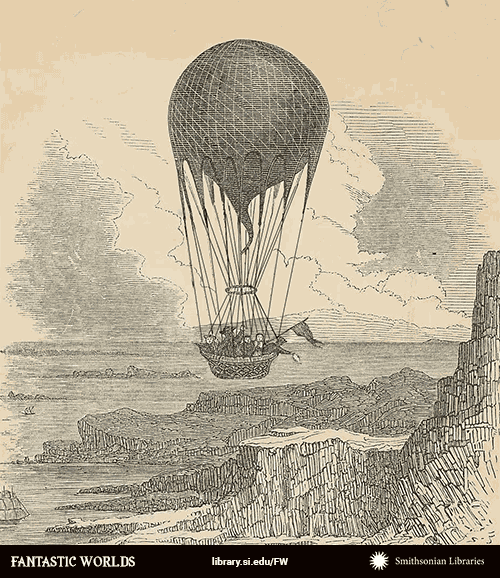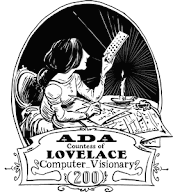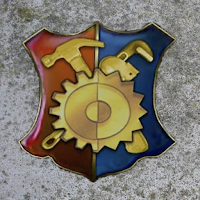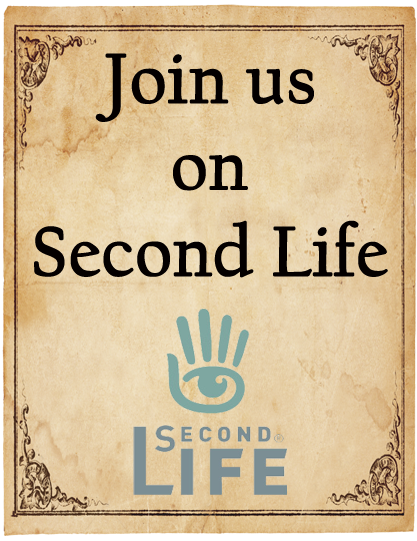((This is actually Miss Writer's transcript. Baron Wulfenbach had an unfortunate failure of his recording device, so the usual types of unedited and edited transcripts may not be available for this Salon.))
Ceejay Writer: Good afternoon, gourmets, connoisseurs, foodies and people who like to eat!
Before I begin, let me preface my talk by explaining that I am a born-and-bred American, and come from a rich heritage of American pioneers. My family emigrated from Italy in 1635 (in fact the Albertis were the first Italian emigrants to set foot on American soil), and from England in the early 1700’s, settling in New York/New Amsterdam, Canada, Michigan and Missouri.
As the nation began to Go West, my family hopped in covered wagons, settling in Utah and Southern California. Much of what I have learned about cooking and food preservation is based on the history and traditions passed down to me through the generations.
I’m a hybrid who loves a shiny espresso maker just as much as a bale wire canning jar. I’m lucky enough to live in the countryside and have a good amount of land. I grow a lot of our food and prepare it to take us through the winter months.
I’ve definitely got one foot in the past and one in the present, and I like it that way. But my upbringing means that a lot of what I know and do is decidedly American. Many of you are *not* Americans, I know!
However, I encourage you to take what you like from this talk and expand on it. Use it as a springboard to learn more about your own history and culture, and bring a bit of it that your kitchen and onto your dining table.
The Victorian Era was an amazing time to be a Foodie! Many changes in American eating habits developed as the citizens got settled in and stopped moving around so much. As home life became more stable, we demanded much more from our kitchens. We wanted better food, faster, easier, and reliable ways to store it.
One of my favorite foodies of the day was Fannie Farmer. She graduated from one of the first American cooking schools, The Boston Cooking School, and in 1896 published (at her own expense) the Boston Cooking-School Cookbook. Versions of her book are still in use today.
Thanks in great part to Fannie, our recipes became more exact. She removed the guesswork from recipes and helped standardize the American measurement system. Precise measurements came into use instead of ‘pinches’ and ‘butter the size of an egg’. She earned the nickname “The Mother of Level Measurements”. Explicit instructions were a huge boon to novice cooks, as it takes many years to develop a natural sense of ‘when just enough is right.’
But, it’s no good having well-prepared food if it’s not safe to eat! We owe a debt of thanks to Louis Pasteur, who in 1856 figured out how to make food much safer. His process of Pasteurization kills bacteria in certain foods.
The urchins in the Salon may want to gather in closer now, cause we’re about to talk about something rather gross. In 1859 Louis Pasteur entered a contest sponsored by the French Academy of Sciences. The goal was to devise an experiment that would disprove the belief in “spontaneous generation’.
What, you may ask, is spontaneous generation? It was a longstanding belief that dated back to before the middle ages. Basically, people believed that decaying matter could suddenly produce life forms.
Here’s a spontaneous regeneration recipe from the 17th century, and I swear I am not making this up! How to produce mice: Put your sweaty stinky underwear into a jar, add wheat husks and wait three weeks. During that time, the sweat would soak into the husks and turn them into mice.
Knowing all we know today, of course that was absurd thinking. Mice were sneaking in after those wheat husks, of course. But this is the sort of mindset that needed to be shattered.
Anyway, Pasteur’s contest experiment had him boiling meat broth in a flask, then heating the neck of the flask enough to bend it into an S shape. The S allowed air to enter, but microorganisms settled out in the S curve, thanks to gravity.
The broth did not produce any microorganisms - and when he tilted the flask to let the broth slide up into the S where all the icky stuff had settled, THEN the broth turned cloudy and went awful.
This new information about the effects of air and microorganisms on food helped pave the way for advances in food storage techniques.
The notion of putting food into metal cans has been around a long time. Decades before Pasteur changed the way we thought about food safety, we’d starting sealing food into containers. In 1810. Peter Durand figured out how to put food into cans.
His invention went into use the British Navy a few years later. Sounds good so far, right? Well. The cans were made of solid iron with a thin coating of tin that clearly outweighed their contents. Now, let’s assume you’re hungry and you’d actually like to get AT those contents.
Grab a can opener? Nope. They haven’t been invented yet and won’t be for a long time. The recommended method to get at your ironclad foodstuffs was to get a hammer and chisel and work your way around the top. Some people couldn’t be bothered with that method and used bullets or bayonets to try to get at their supper.
Any nutritional benefits of the canned food was surely offset by the risk of injury from the method of opening, or the metal shards that might get bashed into your food and ingested... clearly, the food can was an idea needing a lot of work.
In the 1860’s, steel cans replaced those old iron ones - and hurrah, they were much thinner! In 1858, Ezra Warner was the first to obtain a patent on a can opener (clearly, he’d been waiting for this advancement in canning technology).
His can opener had a blade that could be shoved into the rim of the can and then forced around the edge. Warner was obviously a New Babbager, if only in spirit, as he claimed in his patent that‘“a child may use it without difficulty, or risk.”
But you wouldn’t find Ezra’s can opener anywhere in a kitchen - when you purchased your canned goods, you’d ask the store clerk to open them for you, using the store’s can opener. And then you’d take them home. Any benefit of long-term storage ended the moment you bought your food.
In 1870, William Lyman invented that handy little cutting wheel that goes around a can’s rim, and eventually the contraption settled out into something that became a must-have in every kitchen.
While tin cans are one method of long-term food storage, a more hands-on approach is home canning, which in spite of the name, uses glass jars and not cans. Home-canning techniques have changed vastly through the years, but the benefits have always been clear - growing your own food, when possible, extends the household budget, and allows you to preserve your harvest for the winter months.
Even those who don’t grow produce can benefit from taking advantage of good prices for seasonal fresh vegetables and fruit. It’s also a chance to prepare extra luxuries such as jams, jellies, relishes, and pickles. Unlike tin cans, glass jars are re-usable and the contents can be seen through the container.
I could spend hours talking about canning as it’s a topic dear to me - and I’d be happy to offer advise or instructions at other times to anyone wishing to learn more. But for this salon, let’s just focus on one brilliant, eccentric woman who was influential in this area.
Amanda Jones was a scientist who invented the vacuum method of canning. Basically, that means sucking all the air out of a container, thus making it impossible for bacteria to grow. She got the idea from her spirit guides. Yes, you heard me right. You see, she’d contacted her brother *after* his death years before, and ever since then she took most of her advice from her ‘spirit guides’.
The spirits suggested she contact a man named Cooley, and they also described to her the vacuum canning process. She’d never canned anything in her life, but she got in touch with Cooley, and in 1873, together they created the “Jones Process”.
Ten years later, she founded the Women’s Canning and Preserving Company, only allowing women to work there. But three years later, men were hired - and they promptly took over the company and tossed Amanda out. Bet the spirits didn’t tell her *that* was coming!
Now let’s move on to some fun devices that help us make our food tasty. How many of you like.... toast? It’s one of my favorite snacks! People have been making toast for eons. It was originally a way to preserve bread once it lost it’s fresh-baked texture. It’s also a very handy communication device for sending us mere mortals images of deities and aging entertainers, lightly burned into our bread, just waiting for us to alert Ripley’s, or the Weekly World News.
In the Pre-Toaster Era, hunks of bread were laid on hot stones or held up to a fire. In fact, the word ‘toast’ is derived from the Latin ‘tostum’ which means to scorch or burn.
In England in the 1870’s, the first toasters began to appear. These were simple iron heating coils that a slice of bread could be leaned close to. The bread needed to be hand-turned to get both sides toasted. Still, it was pretty techie compared to hot rocks. But these first machines were slightly inconvenient, as they had a tendency to rust, melt, and start fires.
In later years, General Electric pioneered the use of nickel and chromium in the coils, which eliminated that tendency to melt. The toaster has undergone constant refining and improvements ever since - proof that we all are seeking the Perfect Slice of Toast. Someday, I predict that we shall even have Talking Toasters!
Now then. Is Saffia Widdershins in the room? Because we are going to talk about technology beneficial to CAKE. A light fluffy cake often requires well beaten eggs. And there was a time when eggbeaters as we know them did not exist!
Cooks would instead use a ’broad-bladed knife’ or ‘clean switches, peeled and dried’ to whip those egg whites into meringue, and that was very fatiguing work!
Enter intrepid inventor Rufus M. Eastman, who in 1885 created a mixer which could be powered by water, electricity or manually. Pretty fun notion, but it didn’t catch on. The man history remembers is Willie Johnston, who one year earlier devised a beater that used a wheel and well-placed gears to spin the beater blades.
His machine was dual-action, too! It would mix eggs in one bowl and dry ingredients in another, at the same time. Bet that was fun to watch!
So. Now we’ve touched upon inventions that produce toast, and cake... two favored treats in the Steamlands. But I would be remiss if I did not make mention of a device that makes that beloved foodstuff that no Tiny can resist - Waffles!
All hail Cornelius Swarthout of Troy, New York! On August 24th, 1869, he became the first inventor to patent a waffle maker. His device was clever and practical, making good use of the stoves in use at the time.
The Swarthout Waffle Maker was designed to fit exactly into one of those round openings on a woodstove. You’d pull the stove lid out, insert the waffle iron ring, and set the waffle iron into the ring, hooking it into special grooves as shown in the picture.
To cook a waffle, you’d open up the iron, add batter, close it and let the waffle cook. After a short time, you’d turn the waffle iron in the ring to get the other side of your waffle browned.
Atop that waffle, you would have been able to heap fruit preserves, thanks to canning techniques, and whipped cream, courtesy the eggbeater. Serve up that plate with a big glass of pasteurized milk, thanks to our friend Louis. Life doesn’t get much better than this.
Now, please help yourself to a Salon Gift, which I hope both amuses and educates. Special thanks must go to Vernden Jervil, who had the scripting skills to both untangle my logic and improve upon it, helping my notion come to life. I appreciate the assistance!
Questions, comments, anecdotes, recipes?
Girl Genius for Wednesday, April 24, 2024
7 hours ago










